Verbena Plant Profile
Written by Iris
Nov 02 2021
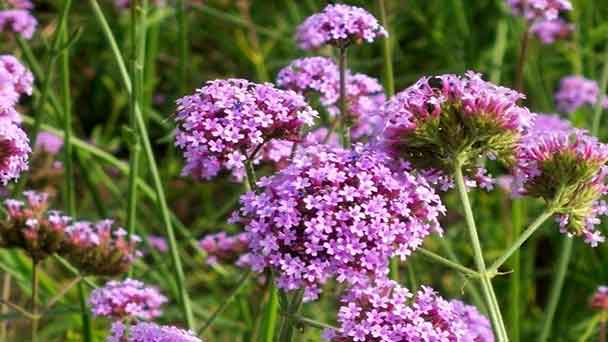
Verbena Plant is known for its long-lasting flowers, which thrive during the hottest days of summer. Verbena Plant is a magnet for butterflies and pollinators, and a great way to add color and structure to your garden. These plants are also easy to grow. In ancient times, Verbena Plant was popular for its supposed healing properties. Today, the plant is also widely cultivated for its ornamental value and use as an essential oil.
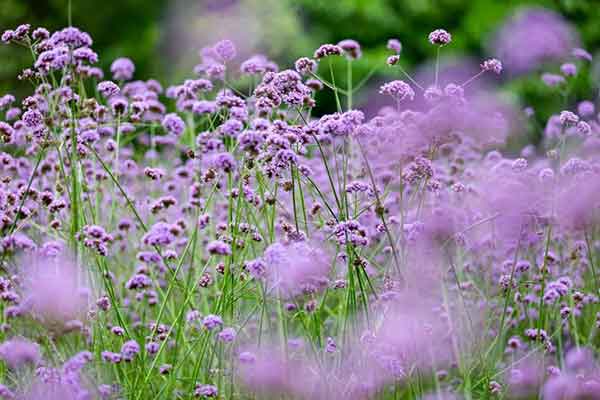
Low trailing plants are usually grown inside containers, while the broadest number of species is often used for borders in gardens. There are many hybrid crosses in the Verbena Plant genus that actively bloom when provided with suitable growing conditions. For annual to sprout with ease, you'll need to wait till the spring season after the frosting period is over. Depending on the variety you're looking to grow, a mature Verbena Plant will reach 12 inches tall and spread about 18 inches wide.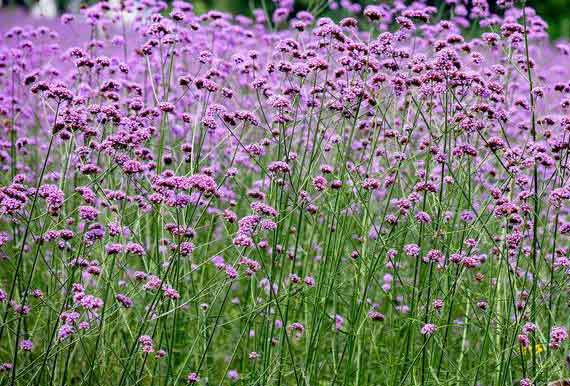
If you are trying to grow in a colder climate, or during the winter, try sowing in seed trays with germinations lids. These help you to regulate the temperature and humidity levels around the seeds, encouraging quicker germination.
Sprinkle the seeds over the soil. Cover your seeds with a thin layer, about half an inch thick, of fresh soil. Gently spray with water and place in a sheltered light position to germinate. Keep the soil damp.
Following germination, allow the seedlings to grow on. Once they are large enough to handle, thin out the seedlings before transplanting into individual containers.
Using a sterilized pair of scissors or knife, they said a few stem cuttings from the parent plant.
You want to make sure they are at least three inches long.
Get rid of any lower leaves on each stem cutting.
Prepare the seed starter mix when growing outdoors or potting soil if you’re growing them inside hanging baskets.
Dig the planting holes at least 3 or 4 inches deep.
Moisten the soil but be careful not to overwater the cuttings.
If you're planning to grow the cuttings indoors, cover the container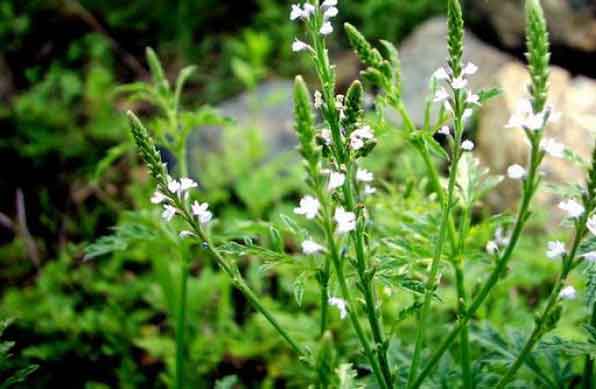
Verbena Plant may relieve symptoms of the common cold and upper respiratory problems. A Verbena Plant gargle may sooth sore throat. Verbena Plant is sometimes used to treat sinus problems, often in combination with other herbs.
Some people think Verbena Plant may be an effective treatment for kidney and liver problems, urinary tract disorders, gall bladder disease, and digestive problems, including constipation, diarrhea, and gas. Although it hasn't been proven, Verbena Plant is sometimes thought to be an effective treatment for depression and anxiety.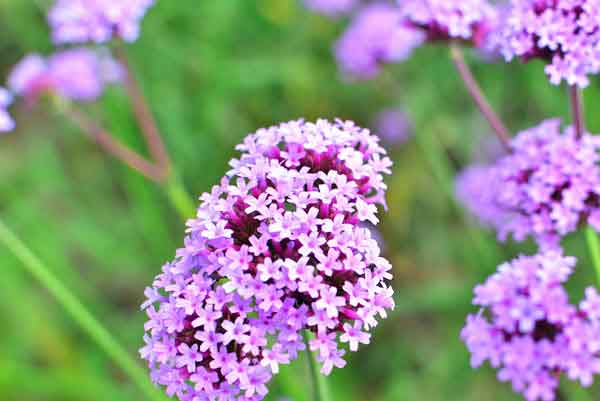
'Lanai Royal Purple with Eye' (Verbena Plant x hybrida 'Lanai Royal Purple with Eye' is a cultivar with bright purple flowers and contrasting white eyes.
'Texas Rose' (Verbena Plant x hybrida ‘Texas Rose’) is a cultivar that bears reddish-pink flowers.
'Blue Princess' (Verbena Plant x hybrida ‘Blue Princess’) is a newer hybrid variety of Verbena Plant that produces beautiful deep blue flowers.
Superbina’" series is bred to resist powdery mildew and it sometimes becomes a short-lived perennial as far north as zone 7. Flowers are white or shades of lavender.
Apart from chemical remedies, you can use insecticidal soap or neem oil to treat the affected areas. Some of the pests you might deal with include spider mites, snails, slugs, thrips, and aphids. A natural remedy for getting rid of these bugs is diatomaceous earth. Compared to chemical options, bugs find it hard to form a resistance against this chalk-like substance.
Companion planting is a great way to encourage growth and keep plants healthy. Basil, which deters thrips, dill, garlic and cilantro, which repel spider mites are all good companions. Chrysanthemums and daisies also help to deter pests and attract useful pest predators such as ladybugs. Planting alongside lobelia or bronze fennel is a great way to support butterflies. Young swallowtail butterflies enjoy the foliage of bronze fennel while the adults harvest Verbena Plants.
Verbena Plant PictureVerbena Plant InfoHabits of Verbena PlantVerbena Plant Distribution AreaHow to Grow and Care for Verbena PlantHow to Grow Verbena PlantHow to Care for Verbena PlantUses of Verbena PlantMedicinal UsesEdible UsesVarieties of Verbena PlantVerbena Plant Common Pests/DiseasesVerbena Plant Design TipsVerbena Plant Companion Plants
Verbena Plant Picture

Verbena Plant Info
| Botanical Name | Verbena x |
| Common Names | Verbena Plant, annual verbena Plant |
| Plant Type | Herbaceous perennial, usually grown as an annual |
| Mature Size | Up to 12 inches tall, 18-inch spread (depends on variety) |
| Sun Exposure | Full sun |
| Soil Type | Dry to medium moisture, well-drained soil |
| Soil pH | 5.8 to 7.2 (acidic) |
| Bloom Time | Spring to fall |
Habits of Verbena Plant
Verbena Plants are commonly grown as perennials or annuals. There are over 250 perennial and annual species in the verbena plant genus. Verbena Plant do well as hardy perennials, ideally under USDA hardiness zones 9 to 11. But in nearly all zones, Verbena Plant are dominantly grown as annuals. And in most instances, they're low growers and elongate in a trailing pattern. When growing inside hanging baskets, the foliage tends to resemble that of fern plants.Low trailing plants are usually grown inside containers, while the broadest number of species is often used for borders in gardens. There are many hybrid crosses in the Verbena Plant genus that actively bloom when provided with suitable growing conditions. For annual to sprout with ease, you'll need to wait till the spring season after the frosting period is over. Depending on the variety you're looking to grow, a mature Verbena Plant will reach 12 inches tall and spread about 18 inches wide.
Verbena Plant Distribution Area
Vervain (Verbena lasiostachys) is a native perennial herb in the Verbena Plantceae (Verbena Plant) family that grows in northern, southern, and central California, as well as Oregon. It is found primarily along the coast, in the Coast Ranges, foothills, and scattered inland locations.
How to Grow and Care for Verbena Plant
How to Grow Verbena Plant
- With Seeds
If you are trying to grow in a colder climate, or during the winter, try sowing in seed trays with germinations lids. These help you to regulate the temperature and humidity levels around the seeds, encouraging quicker germination.
Sprinkle the seeds over the soil. Cover your seeds with a thin layer, about half an inch thick, of fresh soil. Gently spray with water and place in a sheltered light position to germinate. Keep the soil damp.
Following germination, allow the seedlings to grow on. Once they are large enough to handle, thin out the seedlings before transplanting into individual containers.
- With Cuttings
Using a sterilized pair of scissors or knife, they said a few stem cuttings from the parent plant.
You want to make sure they are at least three inches long.
Get rid of any lower leaves on each stem cutting.
Prepare the seed starter mix when growing outdoors or potting soil if you’re growing them inside hanging baskets.
Dig the planting holes at least 3 or 4 inches deep.
Moisten the soil but be careful not to overwater the cuttings.
If you're planning to grow the cuttings indoors, cover the container
How to Care for Verbena Plant
- Light
- Soil
- Water
- Temperature and Humidity
- Fertilizer
- Pruning

Uses of Verbena Plant
Medicinal Uses
Using Verbena Plant as Medicine Verbena Plant may contain powerful anti-inflammatory compounds, and the above-ground parts of Verbena Plants have been used to treat a number of conditions and complaints. For example, the plant may relieve pain associated with arthritis or gout. Additionally, many people use Verbena Plant to treat bruises, burns, itching, and other skin conditions.Verbena Plant may relieve symptoms of the common cold and upper respiratory problems. A Verbena Plant gargle may sooth sore throat. Verbena Plant is sometimes used to treat sinus problems, often in combination with other herbs.
Some people think Verbena Plant may be an effective treatment for kidney and liver problems, urinary tract disorders, gall bladder disease, and digestive problems, including constipation, diarrhea, and gas. Although it hasn't been proven, Verbena Plant is sometimes thought to be an effective treatment for depression and anxiety.
Edible Uses
There are many types of Verbena Plant, and while many are attractive, the flavor is bitter and unpleasant. Lemon Verbena Plant, however, provides a citrusy aroma and lemon-like flavor to a long list of dishes. For this reason, using lemon Verbena Plant in cooking is a common practice. Keep in mind that the flavor is quite intense, so use a light touch when adding lemon Verbena Plant leaves to your culinary dishes, such as Tea, Cocktails, Tarts and other fruity desserts, Ice cream, Sauces, Whipped cream, Poached pears, or peaches.
Varieties of Verbena Plant
The various varieties of hybrid Verbena Plant are usually identified by their unique flower colors. There are notable selections:'Lanai Royal Purple with Eye' (Verbena Plant x hybrida 'Lanai Royal Purple with Eye' is a cultivar with bright purple flowers and contrasting white eyes.
'Texas Rose' (Verbena Plant x hybrida ‘Texas Rose’) is a cultivar that bears reddish-pink flowers.
'Blue Princess' (Verbena Plant x hybrida ‘Blue Princess’) is a newer hybrid variety of Verbena Plant that produces beautiful deep blue flowers.
Superbina’" series is bred to resist powdery mildew and it sometimes becomes a short-lived perennial as far north as zone 7. Flowers are white or shades of lavender.
Verbena Plant Common Pests/Diseases
Most Verbena Plant perennials and annuals are prone to the effects of overwatering. Soil that remains soggy for too long causes the roots to rot, and some other adverse effects include powdery mildew forming on the leaves and blooms. If you spot any powdery mildew, then it could be a result of a fungal infection that spreads in microscopic spores.Apart from chemical remedies, you can use insecticidal soap or neem oil to treat the affected areas. Some of the pests you might deal with include spider mites, snails, slugs, thrips, and aphids. A natural remedy for getting rid of these bugs is diatomaceous earth. Compared to chemical options, bugs find it hard to form a resistance against this chalk-like substance.

Verbena Plant Design Tips
Grow Verbena Plant in hanging baskets, window boxes, and containers paired with other full sun loving cascading annuals such as lantana and calibrachoa. Consider mixing and matching them with tall annuals, such as salvia, cleome, and heliotrope, in containers as well. grow verbena Plant containers on a deck or patio or near a window where you can see the butterflies on the flowers. Tall varieties should be planted in the back of annual and perennial flowerbeds to surprise and add color to the mid summer and fall garden.Verbena Plant Companion Plants
Verbena Plant is a versatile flower that thrives in mixed flower beds. It can look particularly attractive alongside zinnias, million bells, pentas, nasturtiums and marigolds.Companion planting is a great way to encourage growth and keep plants healthy. Basil, which deters thrips, dill, garlic and cilantro, which repel spider mites are all good companions. Chrysanthemums and daisies also help to deter pests and attract useful pest predators such as ladybugs. Planting alongside lobelia or bronze fennel is a great way to support butterflies. Young swallowtail butterflies enjoy the foliage of bronze fennel while the adults harvest Verbena Plants.
Latest Updated
- Benefits of Bugleweed - 7 Science-backed Health Benefits
- Bugleweed Dangers & Side Effects - Is It Poisonous?
- How to Plant Evergreen Trees - What You Should Know
- When to Plant Evergreens - Grow Guide for Evergreen Trees
- 12 Wonderful Evergreen Shrubs for Your Garden
- 12 Popular Evergreen Plants with Pictures for Beginners
- When And How To Prune A Lilac Bush Like a Pro
- How to Grow & Care for Lilac Vine (Hardenbergia Violacea)
- Japanese Lilac Tree (Syringa Reticulata) Care & Propagation Guide
- Shumard Oak Pros and Cons - What to Know
Popular Articles
- Winter maintenance of Antirrhinum Majus
- How to Grow Terminalia Mantaly Tree
- How to Grow and Care for Crossostephium Chinense
- How to grow Antirrhinum Majus in spring
- Peristeria Elata (Dove Orchid) Profile: Info & Care Guide
- Underwatered Snake Plant (Sansevieria Trifasciata) - Signs And How To Fix
- How to Care for Brazilian Jasmine Plant (Mandevilla Sanderi)
- How to Grow & Care for Graptopetalum Purple Delight in Summer
- Rosa Chinensis (China Rose): Plant Growing & Care Tips
- How to Care for Baby Sun Rose (Aptenia Cordifolia)